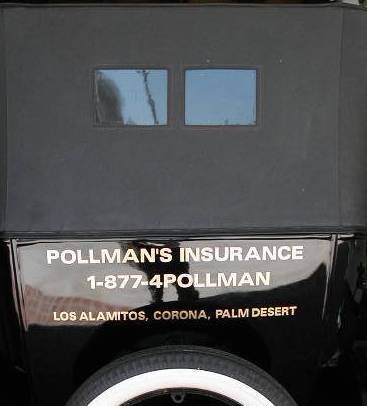DRAFT
Dave Maul
Manager Natural Gas and Special Projects
California Energy Commission
1516 9th Street MS-48
Sacramento, CA. 95814
August 18, 2005
Dear Mr. Maul:
Thank you for the opportunity to provide comments on the Safety Advisory Report the Governor is preparing for the Federal Energy Regulatory Commission (FERC). As you are aware, there is a pending application for an LNG facility at the Port of Long Beach. The following comments respond to the six issues identified in the recently approved Federal Energy Bill.
THE KIND AND USE OF THE FACILITY
Sound Energy Solutions (SES) proposes to construct and operate an LNG import, storage, and vaporization terminal on a 25-acre site on a portion of Pier T, designated Berth T-126, on Terminal Island within the Port of Long Beach, Los Angeles County, California. The import terminal would deliver an average of 700 million standard cubic feet per day (MMscfd) of natural gas with a peak capacity of 1 Bscfd to the existing SoCal Gas pipeline system via a new 2.3-mile-long, 36-inch-diameter natural gas pipeline that would be constructed and operated by SES. In addition, a portion of the LNG would be distributed via trailer trucks to LNG vehicle fueling stations throughout southern California to fuel LNG-powered vehicles. Up to 10,000 million British thermal units (MMBtu) per day of C2 recovered from the LNG would be vaporized and distributed to the existing LARC via a new 4.6-mile-long, 10-inch-diameter pipeline that would be constructed and operated by ConocoPhillips. Power to the LNG terminal would be supplied via 0.8 mile of electric distribution lines and a new substation that would be constructed and operated by SCE. The proposed LNG terminal and associated facilities are described below:
The LNG terminal facilities would include:
- an 1,100-foot-long LNG ship berth and unloading facility with unloading arms, mooring and breasting dolphins, and a fendering system that would be capable of unloading one ship at a time;
- two LNG storage tanks, each with a gross volume of 160,000 cubic meters (1,006,000 barrels);
- 20 electric-powered booster pumps;
- four shell and tube vaporizers using a primary, closed-loop water system;
- three boil-off gas compressors, a condensing system, an NGL recovery system, and an export C2 heater;
- an LNG trailer truck loading facility with a small LNG storage tank;
- a natural gas meter station and odorization system;
- utilities, buildings, and service facilities; and
- associated hazard detection, control, and prevention systems; cryogenic piping; and insulation, electrical, and instrumentation systems.
The proposed ship berth and unloading facility would be designed to handle ships with a capacity ranging from 75,000 cubic meters and an overall length of 844 feet to a capacity of 208,000 cubic meters and an overall length of 1,115 feet. The typical ship size would be between 125,000 and 165,000 cubic meters. LNG vessels of this size would typically have a total length of 950 to 1,000 feet, a beam (width) of about 150 feet, and a loaded draft of about 40 feet. The facility would be capable of mooring and unloading one LNG ship at a time. SES anticipates that up to 120 ships per year would unload LNG at the proposed facility.
The ships would enter the area through Queens Gate, a 1,200-foot-wide opening into San Pedro Bay between the Long Beach and Middle breakwaters. To access Pier T, the vessels would travel northwest within the Long Beach Main Channel into the Middle Harbor. Pier T is located within the West Basin of the Middle Harbor.
SES’ proposal includes on-board ship pumps running on LNG boil-off gas or residual fuel oil to deliver the LNG to the LNG storage tanks. However the Port of Long Beach (POLB) would require SES to use an electrical shore side power source rather than on-board auxiliary engines while at the LNG ship berth (referred to as cold-ironing). A total of four marine unloading arms would be installed on the unloading platform, three for liquid delivery to the storage tanks and one for use in vapor return to the ship. Space would also be provided for potential future installation of a fifth arm, which would increase unloading capacity and flexibility. It would take approximately 12 hours to unload one LNG ship of typical size.
LNG Storage Tanks
LNG unloaded from the ships would be stored in two 160,000 cubic meter (1,006,000 barrel) full containment storage tanks at a normal pressure of 1 to 3 pounds per square inch gauge (psig). Each tank would have a primary 9 percent nickel-steel inner container and a secondary pre-stressed concrete outer container wall, a reinforced concrete outer container bottom, a reinforced concrete domed roof, and an aluminum insulated support deck suspended from the outer container roof over the inner container (see figure 2.1.1-3). The double-walled tanks are designed, and would be constructed, so that both the primary container and the secondary container could independently contain the stored LNG. The primary container would contain the cryogenic liquid under normal operating conditions. The secondary container is capable of containing the cryogenic liquid and of controlling vapor resulting from product release from the inner container. The diameter of the outer containers would be approximately 255 feet and the height to the top of the storage tank domes would be approximately 176 feet.
The space between the inner container and the outer container would be insulated to allow the LNG to be stored at a temperature of -260 °F while maintaining the outer container at near ambient temperature. The insulation under the inner container’s bottom would consist of a cellular glass block. The outer concrete container above the approximately 15-foot-high thermal corner protection system would be lined on the inside with carbon steel plates. This carbon steel liner would serve as a barrier to moisture migration from the atmosphere reaching the insulation inside the outer container. This liner also would form a barrier that prevents vapor from escaping from inside the tank during normal operations. All piping into and out of the tank would enter from the top of the tank (i.e., there would be no penetration through the side or bottom of the tank).
Natural gas is a mixture of hydrocarbon compounds, principally methane. It also contains small amounts of heavier hydrocarbons, such as propane, C2, and butane, that have a higher heating value than methane. A portion of these components may need to be removed from the LNG that would be stored on the terminal site in order for the natural gas to meet the British thermal unit and gas quality specifications of SoCal Gas as well as the specifications for LNG vehicle fuel established by the California Air Resources Board. The components that are removed are called NGL. Accordingly, LNG that does not meet the required specifications would be routed through an NGL recovery unit. The NGL recovery facilities consist of a demethanizer extraction column to extract the heavier hydrocarbons from the methane and a deethanizer extraction column to separate the C2 and propane and heavier hydrocarbons (C3+). As originally proposed, the C2 and C3+ would be stored in two separate atmospheric storage tanks located within the LNG terminal site. The C2 and C3+ would then be pumped from the storage tanks to the truck loading facilities via export pumps for distribution to consumers via trucks.
Subsequently SES reached an agreement with ConocoPhillips to some of the NGL via a pipeline from the LNG terminal site to ConocoPhillips’ Los Angeles Refinery at Carson. The C2 extracted from the LNG in the NGL recovery unit would be used as fuel gas within the terminal and/or vaporized and transported via the proposed C2 pipeline to the existing LARC and subsequently used as fuel gas or feedstock. The amount of C2 available for send out would depend on the Btu content of the cargoes but would not exceed 10,000 MMBtb per day, which is the amount that can be handled at the LARC without requiring any new processing or storage facilities. The C3+ extracted from the LNG in the NGL recovery unit would be used as a fuel gas within the LNG terminal, primarily to fire the water heaters.
A portion of the LNG from the NGL recovery system would be sent to the LNG trailer truck loading facility where it would be further processed and recondensed to produce vehicle fuel grade LNG.
EXISTING AND PROJECTED POPULATION AND DEMOGRAPHIC CHARACTERISTICS OF THE LOCATION
The proposed facility would be located in a highly dense urban area serving as a major tourist destination. As illustrated in Attachment A, within one mile of the proposed LNG terminal, there is no residential population, but there is an average daytime worker population of approximately 2,000. The Gerald Desmond Bridge, one of three bridges that allow access to Terminal Island is also less than one mile from the site. The bridge carries approximately 53,000 vehicles per day.
A demographic profile of population within two, three and five miles follows:
Demographic Profile of area within 2, 3 & 5 miles of proposed LNG terminal
| 2 mile radius | 3 mile radius | 5 mile radius |
| Total Population | 7,346 | 81,535 | 390,930 |
| Total Households | 2,916 | 28,343 | 132,018 |
| Median Household Income | $22,746 | $23,164 | $31,654 |
| Majority Ethnic Group | Hispanic 49.7% | Hispanic 61.1% | Hispanic 49.8% |
| Total Businesses | 893 | 3,822 | 11,235 |
| Total Employees | 16,085 | 44,037 | 113,855 |
Sources: 2000 Census, ESRI, InfoUSA
As part of its ongoing redevelopment efforts, downtown Long Beach is currently experiencing a residential building boom. More than 3,000 new housing units have either been recently completed, are currently under construction, or are in the planning stages. These units plus others that are being proposed will likely add at least 8,000 new residents to the downtown area by 2010. All of this new development is approximately two miles from the proposed LNG site.
The area within three miles of the site contains all of the Port of Long Beach, more than half of the Port of Los Angeles, all of the greater downtown of Long Beach, and a large part of the City of Los Angeles neighborhood of Wilmington, in addition to extensive industrial, warehouse and transportation development and infrastructure. This area includes over 80,000 residents and at least 44,000 workers. A majority of residents within this area are Hispanic and tend to be low-income. Drawn to the relatively affordable housing in the area around the ports, these residents are already subjected to many of the adverse impacts associated with living near such a major port complex, not the least of which is poor air quality.
Almost 400,000 people live within five miles of the project site. This area a contains a large proportion of the total population of Long Beach, and most of the communities of San Pedro, Wilmington, and Harbor City, all of which are districts of Los Angeles. In addition to containing the entire Ports of Los Angeles and Long Beach, this vast area includes a number of major oil refineries, chemical plants and millions of square feet of industrial and warehouse uses. Three major freeways and the Alameda rail corridor emanate from this area, which employs over 110,000 workers. In the next 20 years major increases in population, employment and cargo volume are predicted for this area.
EXISTING AND PROPOSED LAND USES NEAR THE LOCATION
The proposed LNG terminal site is located on the eastern end of Terminal Island, within the Port of Long Beach, in an area known as Pier T. The site was formerly occupied by part of the Long Beach Naval Shipyard, which was built on harbor fill in about 1940. Currently, the immediately adjacent uses include terminals used by Fremont Forest Products, the Weyerhaeuser Company, Pacific Coast Recycling and BP Oil. Most of the rest of Pier T is occupied by the Hanjin Shipping Company megaterminal. Within one mile of the proposed site, there are several vulnerable facilities including, the Boeing Sea Launch, Maritime Preposition Ships, and the Defense Logistics Agency Fuel Facility, which provides jet fuel for all of the southwest area, currently exist. Other uses within one mile are shown in Figure 1.
The Port of Long Beach is a major transportation and trade center, providing shipping terminals for nearly one-third of the waterborne trade moving through the West Coast. Nearly $90 billion in trade moved through the Port of Long Beach in 2002. Port-related activities support 320,000 jobs and nearly $15 billion in wages in Southern California. The Port of Long Beach is one of the world’s busiest seaports, a leading gateway for trade between the United States and Asia. To provide a perspective, it is the second busiest port in the United States, it is world’s 12th busiest container cargo port, and if combined, the ports of Long Beach and Los Angeles would be world’s third busiest port complex, after Hong Kong and Singapore.
Almost all of the Port of Long Beach, including the H.M.S. Queen Mary tourist attraction, lies within the two-mile radius of the proposed facility. The Port of Long Beach is home to 4,445 public and private sector employees. The Queen Mary Seaport has about 2,500 visitors on weekdays and 4,000 on weekends. Adjacent to the Queen Mary is a Carnival Cruises terminal, and a terminal for Catalina Express boats.
The southwest corner of downtown Long Beach also falls within two miles of the proposed facility. This area of downtown includes the Greater Los Angeles World Trade Center, the Long Beach Federal Building, the Los Angeles County Courthouse, the City of Long Beach Public Safety Building (Police Headquarters) and City Hall, plus the tourist area of Rainbow Harbor including the Aquarium of the Pacific. A number of other high-rise office buildings and hotels are also within this zone.
NATURAL AND PHYSICAL ASPECTS OF THE LOCATION
The Port of Long Beach is almost entirely manmade, from the deep-water channels to the immense landfills. Terminal Island is a landfill area with significant liquefaction potential and a surface elevation at or below sea level. According to the Soil Profile in the City’s Seismic Safety Element, the entire Port area is characterized by predominately man-made fill areas consisting of hydraulic-fills, assorted man-made fills, and soils of questionable origin, generally composed of fine sand and silt. Terminal Island is also in a flood zone area (Zone AE, a special flood hazard area inundated by 100-year floods) with particular susceptibility to tsunamis and seismically induced flooding. The Newport-Inglewood Fault zone is located only a few miles northeast of this proposed LNG site. Furthermore, this entire Port area has historically experienced large-scale subsidence
[Figure 1 temporarily unavailable]
EMERGENCY RESPONSE CAPABILITIES NEAR THE FACILITY
The Long Beach City Council has taken the position that public safety is the overriding consideration in any decision related to the proposed LNG facility. With that in mind, the following provides the potential impacts to emergency services associated with an LNG facility.
LNG vaporizes quickly as it absorbs heat from the environment and the resulting vapor is flammable when mixed in air at concentrations from 5% to 15%. Its fire-related properties are comparable to other light hydrocarbon fuels. The only significant difference is that its molecular weight is considerably less than air, so once it warms, it will become less dense than air and tend to rise and disperse more rapidly. However, LNG vapor is 1.5 times denser than air. Typically, LNG released into the atmosphere will remain negatively buoyant until after it disperses below its lower flammability limits.
Pool Fire
If LNG spills near an ignition source, the evaporating gas in a combustible gas-air concentration will burn above the LNG pool. The resulting “pool fire” would spread as the LNG pool expanded away from its source and would continue to evaporate. A pool fire is intense, burning much hotter and more rapid than oil or
gasoline fires. Because an LNG pool fire is so hot, its thermal radiation may injure people and damage property a considerable distance from the fire itself. Many experts agree that a large pool fire, especially on water, is the most serious LNG hazard.
Jet Fire
If compressed or liquefied gases are released from storage tanks or pipelines, the materials discharging through the hole will form a gas jet that entrains and mixes with the ambient air. If the material encounters an ignition source while it is in the flammable range, a jet fire may occur. Jet fires usually occur during unloading or transfer operations due to a pressure increase when pumping. Such fires could cause severe damage but will most likely affect the local area.
Flash Fire
When LNG is released into the atmosphere, a vapor cloud forms and disperses. If the resultant vapor cloud is ignited before the cloud is diluted below its lower flammability level, a flash fire may occur. The combustion normally occurs within portions of the vapor cloud, rather than the entire cloud. A flash fire could potentially burn back to the release point resulting in a pool or jet fire. It is unlikely for a pool or jet fire to explode when unconfined.
Explosions
A flash fire can occur if LNG is released into the atmosphere and ignited. If ignited in open (unconfined) areas, pure methane is not known to explode. However, if some confinement of the vapor cloud is present, methane can produce damaging overpressures. Confinement can be provided by spaces within the ship or nearby structures, such as an onshore building or another ship. Areas congested with equipment and structures can also facilitate an explosion if a vapor cloud is ignited within such an area.
For example, if a vapor cloud infiltrates a chemical process plant in an area with various vessels, structures, and piping and the cloud ignites, the portion of the cloud within that congested area may generate an explosion.
Thermal Radiation Levels on Population and Structures
The extent to which people are injured by exposure to thermal radiation depends on both the incident heat flux and exposure time. A variety of data are available for estimating effects on people, including data from experiments with humans and animals and review of historical data.
Like effects of thermal radiation on people, effects on structures also depend on incident heat flux and the exposure time. With structures, effects also depend strongly on the materials of construction (e.g., wood, steel, concrete).
LNG Safety
A number of studies and reports have been published about LNG tanker safety, with varying conclusions regarding the likelihood and consequences of a large LNG marine spill. In order to provide the federal government and general public with a clearer picture of the risks associated with LNG tankers, the Department of Energy (DOE) tasked Sandia National Laboratories (SNL) to perform an independent review of these studies and reports and then develop their own conclusion about the risks associated with LNG tankers. SNL was also tasked with developing guidance on a risk-based approach to assess and quantify potential threats to a LNG ship, to review the potential hazards and consequences of a large spill from a LNG ship and review risk management strategies that could be implemented to reduce both the potential for, and the risks of, a LNG spillover on water.
The Sandia Report states that risk identification and risk management should be conducted in cooperation with appropriate stakeholders, including public safety officials and elected public officials. These considerations should include site-specific conditions, available intelligence, threat assessments, safety and security operations, and available resources. It also determines that this approach should be performance-based and includes identification of hazards and risks, protection required for public safety and property and risk prevention and mitigation strategies.
Resource Needs for Safety, Security and Response
It is important that identification of specific required capabilities on-site or in the local community, that are in place, or more importantly - not in place, be made to manage these consequences. Based on the sum of the above risk management strategies, the Long Beach Fire Department and Police Department has made a preliminary assessment of the resources needed to implement these strategies.
TRAINING
Firefighting Training: According to Texas A & M University, the study committee identified that sending firefighters occasionally to train on LNG fires was inadequate. A scheduled allotment of individuals, who should attend throughout the year for the life of the terminal’s existence, should be identified. LNG presents unique firefighting issues the Fire service does not face routinely. Currently, the West Coast lacks any type of LNG training facilities.
Dive Training: As in Everett, Massachusetts, a qualified dive team will need to “clear” the dock and surrounding structures as the ship arrives in Port. This staffing-intensive operation will require continued training of dive personnel and Dive Masters.
Hazardous Material Training: Within the day to day operations of an LNG terminal, situations exist that go beyond the scope and expertise of a basic firefighter. It would be reasonable to expect the proprietors of the facility to provide consistent Hazardous Materials and Confined Space training.
EQUIPMENT
Fireboats capable of mitigating a large LNG spill on water: Currently in the United States, tugboats, which are being used to maneuver the LNG tankers dockside, are being used jointly as fireboats. The Fire Department believes that tugboat operators lack the qualifications associated with professional firefighting. We also realize that in the event of a large LNG pool fire, the tugs will be tied to the tanker as the event takes place. Their usefulness as to firefighting will be called into question. Based on fire prediction models, close proximity firefighting in regards to the tanker will be prohibitive. Firefighting efforts will be directed at covering exposures from the radiated heat, thus mitigating the problem. Additionally, if the fireboats were utilized every time an LNG tanker came to Port, maintenance costs for the boats increased activity would need to be addressed.
Dive Team: All equipment necessary to perform the operation of searching for explosive devices. This equipment would consist of normal diving equipment (i.e., dry suits, scuba gear, PPE, etc.) and the necessary tools to perform searches, such as communication systems, infrared systems, and any other ancillary equipment that would provide for a safe working condition.
Dive Boat and station to house the boat, dive personnel, and support staff.
Dry Chemical: According to the book “Liquefied Natural Gas in California,” water is ineffective in fighting LNG fire because it provides a heat source for vaporization.
An agreed upon number of fire apparatus that are equipped with the appropriate dry chemical agent that would be put into service should there be a spill in the terminal. Though the terminal will have built-in fire-extinguishing systems, it is important to have back up equipment in case of a system failure.
A sufficient supply of dry chemical on scene to replenish any used product should it be put into use.
A full time Fire Prevention LNG Inspector
A full time Fire Prevention Plan Checker for the duration of the build
Two (2) bricks and mortar Fire Stations: Based on the Quest report identifying Thermal Radiation Levels on Population and Structures, it appears that levels as low as 4,000 Btu/hr/ft2 can cause buildings to ignite after prolonged exposure. It also states that levels as low as 7000 Btu/hr/ft2 can cause buildings to ignite after just a short exposure. In addition to that, it appears that the maximum exposure for firefighters to operate for long periods of time, even in personal protective gear, is approximately 2,500 Btu/hr/ft2. In this case, both Fire Stations 15 and 20 are in areas that would be exposed to radiant heat flux that exceed the levels above.
As tankers arrive, a 500-1,000 foot exclusionary zone is required around the vessel to provide security. While the Coast Guard is responsible for providing waterside security, there are no assurances additional funding will be provided to fulfill this requirement. Therefore, if no additional funding is provided to the Coast Guard, the City of Long Beach will assume the security responsibility. If that is the case, additional staffing and equipment will be required for the Police Department.
In addition to the exclusionary zone around the tanker vessel, air security is required. This responsibility rests with the Long Beach Police Department. The existing police helicopter cannot be diverted, therefore an additional helicopter and staff will be required.
At this time, the resources outlined above are a preliminary estimate. In order to fully asses the emergency response capabilities and required resources, the owners of the proposed LNG facility should provide a comprehensive report, which should include an analysis of "reasonable worst case scenarios" using risk and hazard analysis (including terrorist attacks). The consequences should be described in terms of impact on surrounding infrastructure, communities and terminals - not just heat flux estimates. While there are limitations in existing data and current-modeling capabilities for analyzing LNG spills over water, existing tools, if applied as identified in the guidance section of the Waterway Suitability Assessment, can be used to identify and mitigate hazards to protect both public life safety and property conservation.
Once that assessment is complete, the City of Long Beach would contract with an outside consultant to work with the Fire and Police Departments to establish standards of protection and implement the recommendations required to maintain the mitigation capability of any incident related to a LNG facility. In addition to identifying resources, the total fiscal impact to the City of Long Beach of any LNG facility should be identified and full reimbursement for all additional service, security and fire protection must be included in any model developed for the delivery of LNG in the proposed project.
NEED TO ENCOURAGE REMOTE SITING
At this time the Long Beach City Council has not formally adopted a position on the siting of the proposed LNG facility. The City Council is expected to take action on this issue on August 23, 2005. Until this action occurs, the following provides information for your consideration.
Advantages to Siting in Urban Areas like the Terminal Island Location
Close Proximity to Urban Infrastructure and Employment
The project applicant, SES, has stated that an industrial port is considered the proper place to site an LNG facility. The locational advantages involve convenient transportation of LNG fuel from the tankers to adjacent storage facilities throughout the Port and Wilmington areas as well as a readily available source of fuel for industrial vehicles and equipment.
The project applicant has projected Port employment from this LNG facility to be approximately 1,000 construction jobs over a 36-month period and 61 full time jobs for LNG operations (including 28 truck drivers). The vicinity of the proposed location also provides a significant pool of qualified workers thereby reducing the need for long commutes or relocation of workers from other areas.
LNG storage in a non-urban site could also increase transportation and storage costs. In addition, the infrastructure to support the operation, such as pipelines, and highways may need to be constructed adding to costs. Depending on the remote area, there could be significant environmental impacts due to the disruption and improvements necessary to support a new facility.
Disadvantages to Proposed Terminal Island Location and Reasons For Remote Siting
Catastrophic Accident Potential
The placement of an LNG facility should be evaluated in the full context of its potentially hazardous factors, both natural and man-made. Some believe one LNG tanker has the destructive equivalence of 55 Hiroshima bombs. The City of Long Beach is potentially both a military and terrorist target due to the Port operations and oil production/storage facilities.
Many experts agree that a pool fire, especially on the water due to thermal effects, is the most serious LNG hazard. Such pool fires are intense, burning far more hotly and rapidly than oil or gasoline fires. Pool fires cannot be extinguished. All LNG materials must be consumed before the pool fire goes out. Because LNG pool fires are so intensely hot, their thermal radiation may injure people and property a considerable distance from the actual fire location.
A major LNG incident at this proposed Port location could result in massive damage to both people and property over an area that could include downtown Long Beach as well as residential neighborhoods north of the Port. In the event of a major accident, deaths and serious injury could easily reach into the hundreds for Port employees and nearby residents. Both the Port and downtown could sustain devastating and long-term economic damage that would seriously cripple the nation’s import capacity (at present, approximately 40% of all imports to this country enter through the Long Beach and Los Angeles Ports).
Terrorist Target
LNG facilities could be vulnerable to terrorist attack due to the large proportions and easy visibility of the storage infrastructure.
The following comes from LNG Facilities in Urban Areas, A Security Risk Management Analysis for Rhode Island Attorney General Patrick Lynch, Good Harbor Consulting LLC, May 2005
"While there is no adequate way in which to determine the probability of a terrorist attack on the proposed urban LNG facility and inland waterway transit routing, there is adequate grounds to judge that such an attack would be consistent with terrorists demonstrated intent and capability. There is also a basis to judge that likely enhanced security measures would not significantly reduce the risk. While there are some differences among experts about the conditions needed to generate a catastrophic explosion and about the precise extent of the resulting damage, there is [sic] significant grounds to conclude that a high risk exists of catastrophic damage from the types of attacks terrorists are capable of mounting. Those damage levels would overwhelm regional trauma, burn, and emergency medical capabilities."
In the event an LNG tanker is attacked, a one-mile blast radius would disrupt a significant amount of oil infrastructure in and near the Port. Damage to the infrastructure would affect production and injection facilities, but would be repairable in two - four years. The blast could cause fires, explosions, and secondary fires in the oil field from oil and gas production in and around pipelines and wells. The blast would be confined mostly to equipment and employees operated by Tidelands Oil Production Company, a contractor of the City of Long Beach. Economically, it would affect a loss by expenditures for repairing equipment up to $800 million. Net revenue loss for the State, Port of Long Beach, City of Long Beach and other individual working interest owners (not including any expenditure for repairs) would be between $120 million to $240 million. Tidelands Oil Production Company, contractor to the City of Long Beach would possibly not choose to rebuild, increasing the net revenue loss to the stakeholders into the billions. Additionally, though not a part of the oil operations, oil being shipped from ships to dock in the Port (BP terminal) would be destroyed causing fires and oil spills in the ocean.
Siting an LNG storage facility in a non-urban setting would reduce the incentive for a terrorist attack. Terrorist targets are typically chosen by factors involving population density of an area and/or specific congregation points, as evidenced by the World Trade Center in New York and the public transportation facilities in Spain and Britain
SUMMARY
Consideration of a LNG facility within the City of Long Beach is a complex issue requiring a detailed and thorough analysis. To date, that analysis has not been prepared. Placement of such a facility in a densely populated high impact area must not occur until a complete risk, economic, and fiscal impact assessment is complete. At a minimum, the assessment must address:
- Impacts to the surrounding population, economy, and transportation network in the event of a catastrophic event
- Impacts to existing Port operations and surrounding terminal operations during arrival and departure of LNG tanker vessels.
- The ability of the Coast Guard to provide the required water safety, and if not funded to do so, the impact on local police resources.
- Impacts to air traffic within the flight path above the proposed LNG facility.
- Reasonable worst-case scenarios using risk and hazard analysis (including terrorist attacks).
- A comprehensive waterborne, landside and air security plan developed in consultation with the City of Long Beach
- Standards for protection and implementation recommendations for the Fire and Police Department to mitigate any incident related to a LNG facility.
- Identification of the complete fiscal impact to the City of Long Beach resulting from any LNG facility.
- Impacts to the Navy, Boeing, and the Defense Department resulting from the proposed LNG facility.
- An assessment of the Homeland Security threat.
Thank you for the opportunity to participate in preparing the Safety Advisory Report. I appreciate consideration of the issues presented in this letter and my staff is available to provide further assistance and answer any questions related to this matter.
Sincerely,
Gerald R. Miller
City Manager
DRAFT








